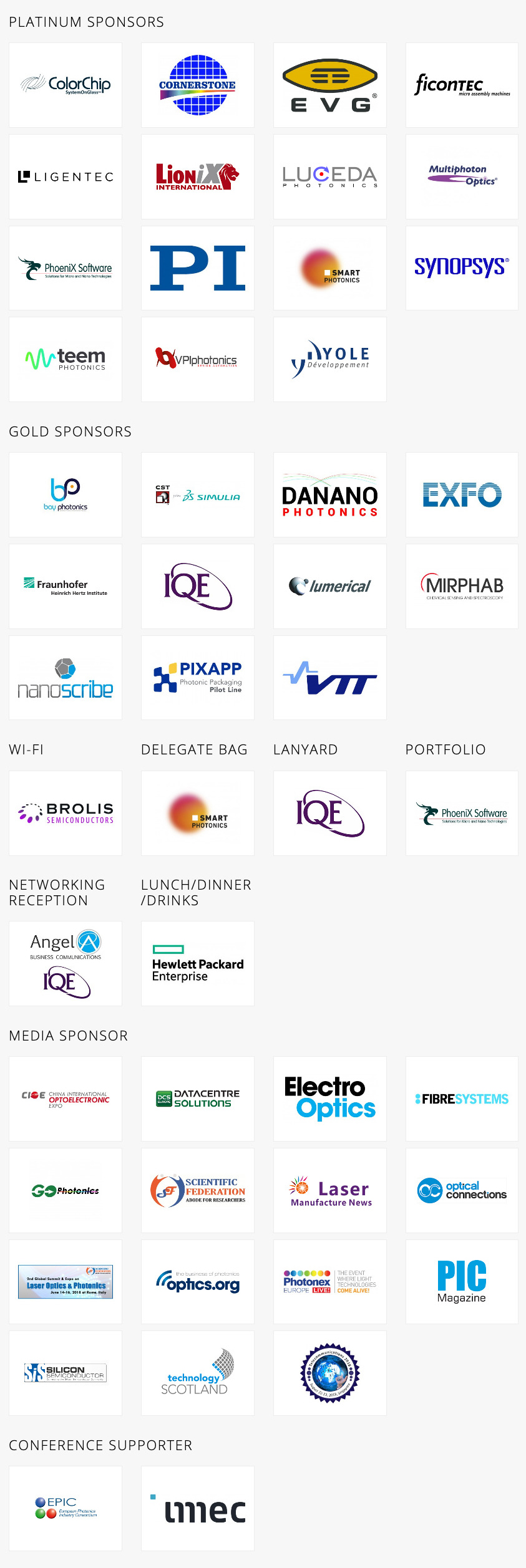Brussels proves a great venue as more than 600 attend the co-located PIC International, CS International and HES International Conferences.
Conference Chair, Dr Michael Lebby reflects on the third PIC International Conference.
"We have just finished the 3rd annual PIC International Conference, and again like in 2017, it surpassed everybody's expectations, not only from the organiser’s perspective, but from the attendees, and my perspective as chairman of the conference. Attendance was full – yes maximum allotted seats, and at times, folks from CS International and HES International attended the PIC sessions. Our annual PIC awards generated 1000’s of online votes and the winners in 7 categories were announced at the end of Day 1. Like last year, these are PIC industry awards, voted by the PIC industry.
Individual Awards:
1) Lifetime PIC achievement – Professor Roel Baets
2) PIC Entrepreneur and Business Leader – Dr Michael Lebby
3) PIC Technologist – Dr Bill Ring
Company Awards:
1) PIC Hero – Bright Photonics and NAZCA
2) Advances in Photonics Integration – Ayar Labs
3) Advances in PIC Manufacturing – LioniX International
4) PIC Platforms – Ligentec
This year, there were over 600 delegates attending two days of jam-packed (and at times standing room only) sessions on photonic integrated circuits (PICs) that spanned the whole value chain from wafers, epi-materials, to devices, to modules, to systems, to architecture, and finally to service providers, and in particular fiber optic datacenters.
There were also talks that explored PIC based technologies outside of fiber optics, and those areas included bio, medical, sensing, and LIDAR. This year we brought together luminaries of the PIC industry to form 2 panel sessions; one on Day 1 to address high volume, high performance PICs, and another on Day 2 to explore the merits of silicon photonics.
The panel sessions generated interesting themes such as: PICs for datacenters is here and now, PICs for telecom growing quickly, PICs for non-communications markets growing very quickly.
Furthermore, PICs, and especially hybrid PICs seems to garner the support of the majority of the panelists. Panelists also discussed high (100Gbps) performance, volumes of wafers and chips, as well as process development kits, new technology platforms such as polymers, glass, dielectrics, GaAs in addition to InP and silicon photonics.
The conference discussed in detail incumbent PIC technologies such as InP and GaAs, as well as Silicon Photonics (SiP), Polymer Photonics (PP), and Dielectric Photonics (DP).
The conference also discussed both datacenter and telecommunications opportunities for PICs with forecasts for new architectures, standards, technologies and cost expectations.The latest results in the PIC field were also presented and showed a significant performance upgrade towards both 50Gbps and 100Gbps to generate transceivers at 400Gbps. Some speakers discussed the virtues of moving performance levels to 800Gbps.
Like in 2017, there were a number of exciting sessions, where one session discussed improvements in PIC infrastructure for designing and manufacturing robust and reliable PICs using software tools for modeling, simulation, and production. This was supported by many PIC talks that addressed PDKs and other metrics needed to quickly grow PIC markets.
This year new and innovative talks discussed medical, life sciences and bio-photonics and how PICs based technologies can enable new products that are more miniature, low power, and high performance, which is becoming especially important for hand-held battery powered diagnosis and health monitoring products.
These speakers showed that the result of designing PICs for the popular verticals of telecommunications and data communications, the solutions could easily be applied to medical, measurement, automotive, and other industrial applications for PICs. Perhaps by next year’s PIC conference we will see the first products emerge in these new market segments.
The good news is that some of these opportunities will be high volume and will promote more aggressive pricing strategies especially towards the magic $1/Gbps that is often touted by large data centre customers.
As Co-Chairman, every presentation was reviewed beforehand, and clearly showed a number of improvements in the technology over the past 12months. PIC markets are growing strongly to 10s of $B over the next decade, as well as the scalability of PIC technological platforms. The rise of the hybrid PIC as noted by the panelists shows that customers are now more open than ever to find the right PIC solution for their particular portfolio.
A focused, well attended, with high technical content conference such as PIC International, surpassed itself again in 2018. PIC International is the conference to attend for the latest and greatest in photonic integrated circuits.

